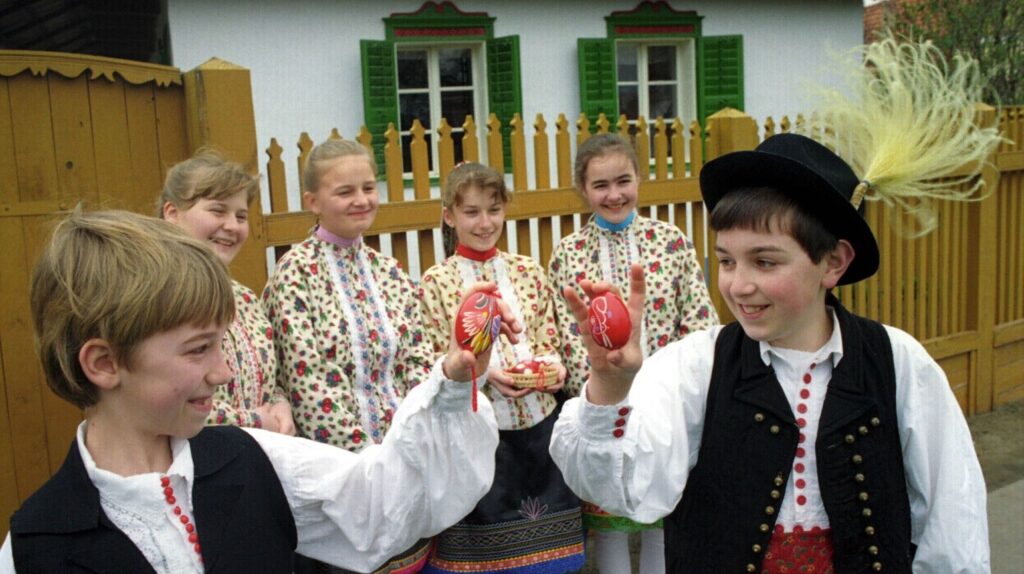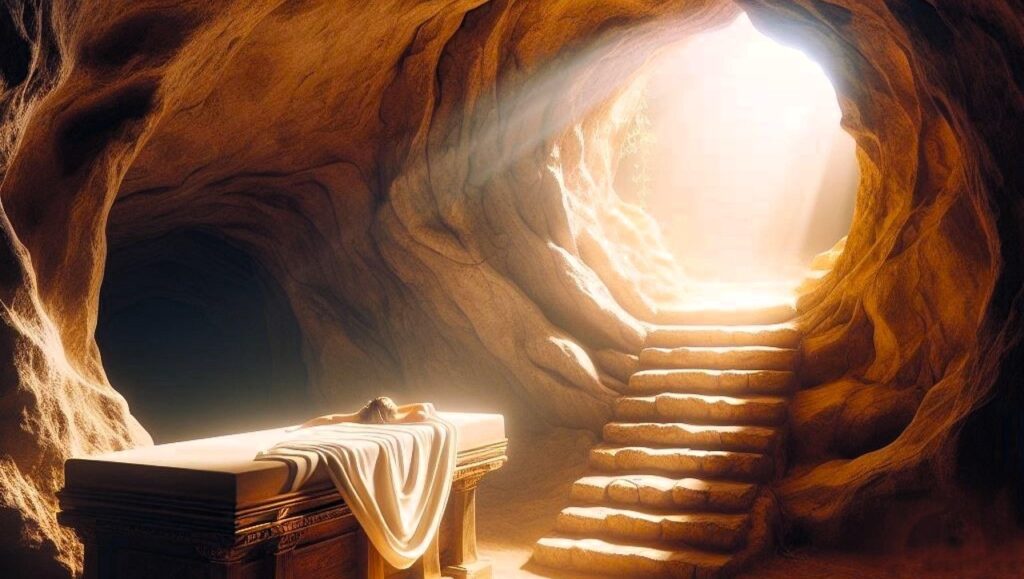The most well-known destinations in Palócföld, Hollókő, Mátraverebély-Szentkút, and Ipolytarnóc are welcoming visitors with Easter festivals, spiritual retreats, and egg-hunting challenges, the press officer of Mátraverebély-Szentkút Pilgrim Centre, Regina Kerekes-Dancsok told MTI on Tuesday.
She said that it is worth visiting the Pilgrim Centre during Easter not only because of the spring water and the statue of the Virgin Mary. In addition to the liturgy of the Three Holy Days (or the Triduum of Holy Thursday, Good Friday, and Easter Vigil on Holy Saturday), the centre will also organise a spiritual retreat. The participation in the rituals is facilitated by the commentary of one of the Franciscan monks. During the four-day Easter celebration, children can participate in an egg-hunting challenge organised by the Ipolytarnóc Fossil Nature Reserve. In addition, on Saturday visitors can get to know the aquatic life of the Miocene Forest at the reserve, while on Sunday, at the Lombkorona Café shark pond, visitors can learn about ancient oceans, former marine floods, the Pannon Lake, and the waters of the Carpathian Basin. On Easter Monday, those interested can take part in a Miocene tour.
Hollókő
Regina Kerekes-Dancsok underscored that this year, visitors can finally also walk inside the renovated Hollókő Castle. According to an announcement by the CEO of the Hollókő World Heritage Management Nonprofit Ltd. on Tuesday, this year’s Hollókő Easter Festival at the UNESCO World Heritage site of Hollókő in Nógrád County, will feature folk programmes, Palóc gastronomy, traditional customs, ‘locsolkodás’ (a Hungarian Easter tradition of sprinkling women with water), as well as concerts and family and children’s programmes.
The village’s 67 red-tiled heritage houses, inscribed on the list of UNESCO World Heritage sites, are reminiscent of an open-air museum, but with the difference that Hollókő is a living, functioning village. During Easter, its inhabitants don their famous, colourful folk costumes and bring to life the best of Hungarian Easter traditions. This year, visitors can even take home the Hollókő Locsoló Water in a decorative bottle. The CEO noted that Easter traditions are among the disappearing cultural values, but Hollókő is a place where all that characterises the Hungarian holiday can be found during these days. The festival’s events include a craft fair on Good Friday, egg painting at several locations, archive photos and films projected at the Visitor Centre, and the revival of Hollókő’s fasting traditions.
On Saturday, gastronomic and traditional programmes will take place in the courtyards of Ófalu. There will be dance lessons with the Nógrád Dance Ensemble, ‘rattling’ (a traditional Hungarian custom of making noise with rattlers) and making plum dumplings. The vigil of Holy Saturday will be held at 4 pm. The stage at Pajtaárok will host the Keleti Szél Band concert and medieval dance house, with guest performer Rebeka Méry. On Sunday, there will be an Easter Mass and a resurrection procession, followed by a dance house with Nógrád and the Fonó Folk Dance Ensemble. Additionally, the Dűvő Band and the Kerekes Band will perform. On Monday, after the Easter Mass, there will be ‘locsolkodás’ at the, followed by a concert by Parno Graszt.
Hollókő is a small settlement located in northern Hungary that is known for its rich cultural heritage and traditional way of life. One of the most important holidays celebrated in Hollókő, as in much of Hungary, is Easter. Easter is a time of renewal and rebirth, and it is celebrated with a number of traditional customs and practices that have been passed down through the generations.
Easter is a time of great significance in Hollókő. The traditions and customs associated with this holiday are deeply rooted in the culture and history of the village, and are a testament to the enduring strength and vitality of the Hungarian people. Whether it’s the preparation of the Easter ham, the decoration of eggs, or the Easter Monday water throwing ritual, the traditions of Easter in Hollókő are a reflection of the deep sense of community and cultural pride that defines this unique and vibrant village.








